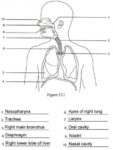The Structure of the HIV Virus
The Human Immunodeficiency Virus (HIV) is a complex entity that has been the subject of extensive research since its discovery in 1983. The structure of HIV is unique and different from other retroviruses.
Viral Composition
HIV is composed of two strands of RNA, 15 types of viral proteins, and a few proteins from the last host cell it infected, all surrounded by a lipid bilayer membrane. This composition allows the virus to infect cells of the immune system and force them to build new copies of the virus.
Genome and Proteins
The complete sequence of the HIV-1 genome, extracted from infectious virions, has been solved to single-nucleotide resolution. The HIV genome encodes a small number of viral proteins, invariably establishing cooperative associations among HIV proteins and between HIV and host proteins, to invade host cells and hijack their internal machineries.
Viral Structure
The HIV virion is approximately 100 nm in diameter. Its innermost region consists of a cone-shaped core that includes two copies of the positive sense ssRNA genome, the enzymes reverse transcriptase, integrase and protease, some minor proteins, and the major core protein.
Role of RNA
The two RNAs are often identical, yet they are not independent, but form a compact dimer within the virion. Several reasons as for why two copies of RNA are packaged rather than just one have been proposed, including probably a combination of these advantages: One advantage is that the two copies of RNA strands are vital in contributing to HIV-1 recombination, which occurs during reverse transcription of viral replication, thus increasing genetic diversity. Another advantage is that having two copies of RNA would allow the reverse transcriptase to switch templates when encountering a break in the viral RNA, thus completing the reverse transcription without loss of genetic information. Yet another reason is that the dimeric nature of the RNA genome of the virus may play a structural role in viral replication.
Conclusion
The structure of HIV is a testament to its ability to effectively invade host cells and replicate. Understanding this structure has been crucial in the development of treatments for HIV infection, including effective drug regimens that halt the growth of the virus. The structures also provide new hope for the development of a vaccine.



